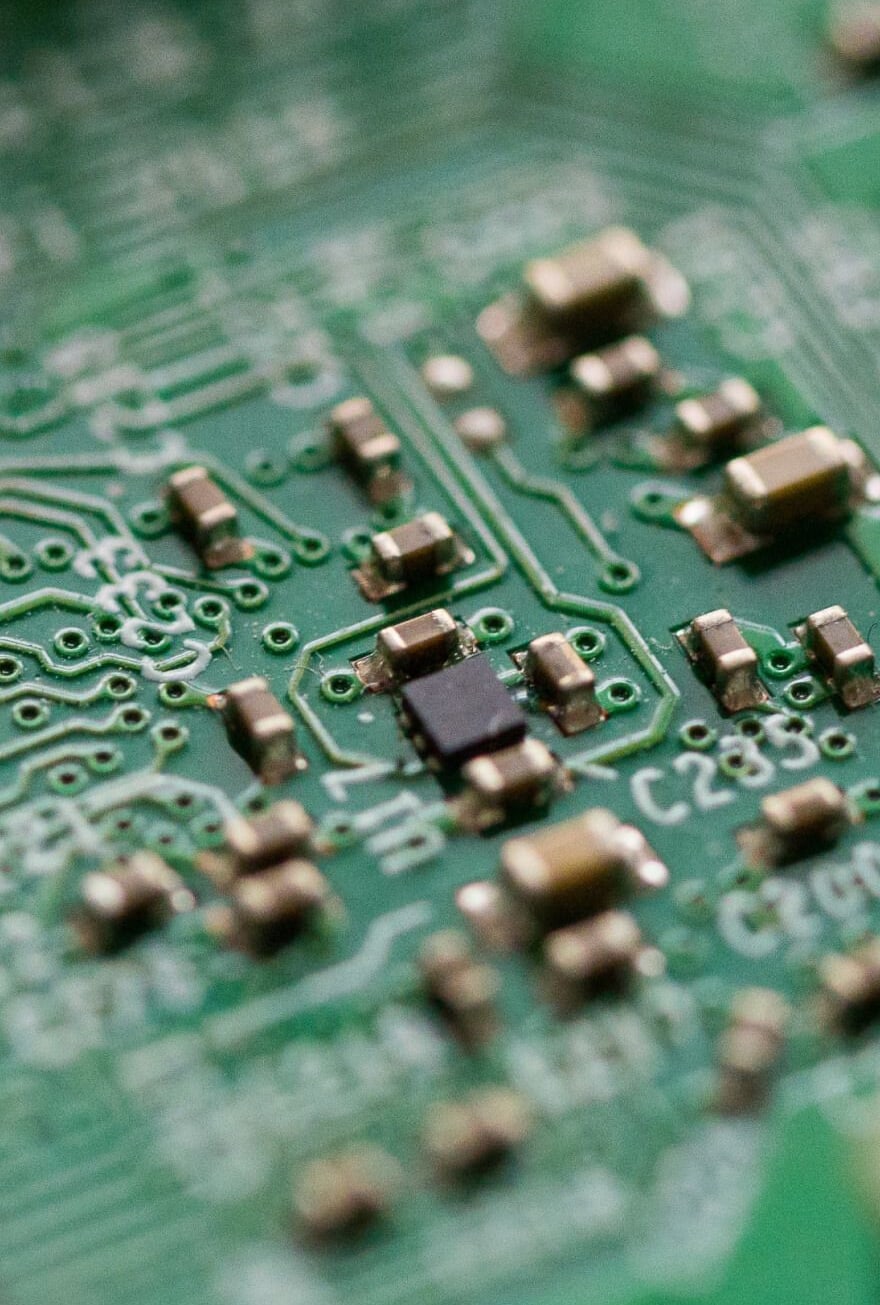Knowde Enhanced TDS
Identification & Functionality
- Chemical Family
- Technologies
- Product Families
Features & Benefits
- Labeling Claims
- Ready-to-Use Product Features
- Features & Benefits
- Meets UL 94V-0 standard—flame retardant
- Convenient 2A:1B volume mix ratio
- Thermal conductivity of ~0.8 W/(m·K)
- Low exotherm
- Very high compressive and tensile strength
- Excellent adhesion to a wide variety of substrates including metals, composites, glass, ceramics, and
- many plastics
- Excellent electrical insulating characteristics
- Broad service temperature range of -40 to 175 °C (-40 to 347 °F)
- Contains non-halogenated flame-retardant fillers
- Solvent-free
- Compatibility
- Adhesion - As seen in the substrate adhesion table, 834B epoxy adheres to most plastics and metals used to house printed circuit assemblies; however, it is not compatible with contaminants like water, oil, or greasy flux residues that may affect adhesion. If contamination is present, first clean the surface to be coated with MG Chemicals 824 Isopropyl Alcohol.
Applications & Uses
- Markets
- Applications
- Compatible Substrates & Surfaces
- Cure Method
- Application Instructions
- Scrape settled material free from the bottom and sides of the part A container; stir contents until homogenous.
- Scrape settled material free from the bottom and sides of the part B container; stir contents until homogenous.
- Measure 2 parts by volume of the pre-stirred part A, and pour into the mixing container. Ensure all contents are transferred by scraping the container.
- Measure 1 part by volume of the pre-stirred part B, and pour slowly into the mixing container while stirring. Ensure all contents are transferred by scraping the container.
- Thoroughly mix parts A and B together.
- Let sit for 15 minutes to de-air. -or- Put in a vacuum chamber at 25 inHg for 2 minutes to de-air.
- If bubbles are present at the top, break and stir them gently with the mixing paddle.
- Pour the mixture into a container holding the components to be protected.
- Close the part A and B containers tightly between uses to prevent skinning.
Attention!
Mixing >1 kg at a time decreases working life and can lead to a flash cure. Limit the size of hand-mixed batches. For large production volumes, contact MG Chemicals Technical Support for assistance.
Properties
- Flame Rating
- Physical Properties
- Thermal Properties
- Typical Properties
- Electrical Properties
- Temperature Properties
- Uncured Properties
- Substrate Adhesion (In Decreasing Order)
Physical Properties Adhesion Brass Stronger Aluminum/Copper 
Steel Fiberglass Wood Paper, Fiber Glass Rubber Acrylic Polycarbonate Weaker Polypropylene Does not bond Teflon™ Does not bond - Temperature Properties
- a) Brookfield viscometer at 30 rpm with spindle LV S64
- Cured Properties
Note: Specifications are for epoxy samples cured at 80 °C for 1 h and conditioned at ambient temperature and humidity.
a) To allow comparison between products, the dielectric strength was recalculated with the Tautscher equation fitted to 5 experimental values and extrapolated to a standard thickness of 1/8” (3.175 mm).
b) Coefficient of Thermal Expansion (CTE) units are in ppm/°C = in/in/°C × 10-6 = unit/unit/°C × 10-6.- Uncured Properties
Physical Properties Part A Part B Viscosity at 25 °C (77 °F) 27500 cP [27.5 Pa·s] Brookfield viscometer at 100 rpm with spindle RV S07 2100 cP [2.1 Pa·s] Brookfield viscometer at 100 rpm with spindle RV S05 Density 1.69 g/mL 1.40 g/mL - Uncured Properties
a) Brookfield viscometer at 30 rpm with spindle LV S64
- Cure Instructions
Room temperature cure:
- Let cure at room temperature for 72 h.
Heat cure:
- Put in oven at 65 °C [149 °F] for 1.5 h.
- Put in oven at 80 °C [176 °F] for 1 h.
- Put in oven at 100 °C [212 °F] for 20 min.
Attention!
Due to exothermic reaction, heat cure temperatures should be at least 25% below the maximum temperature the most fragile PCB component can tolerate. For larger potting blocks, reduce heat cure temperature by greater margins.
| Value | Units | Test Method / Conditions | |
| Compressive Strength ⁽ᵃ⁾ | 74 (11,000) | mPa (psi) | ASTM D 695 |
| Density (at 25°C, 77°F) | 1.59 | g/mL | ASTM D 1475 |
| Flammability | Meets 94 V-0 | — | UL 94 |
| Hardness D | 85 | — | Shore D Durometer |
| Lap Shear Strength (ABS) ⁽ᵃ⁾ | 1.8 (260) | mPa (psi) | ASTM D 1002 |
| Lap Shear Strength (Aluminum) ⁽ᵃ⁾ | 11 (1600) | mPa (psi) | ASTM D 1002 |
| Lap Shear Strength (Brass) ⁽ᵃ⁾ | 17 (2500) | mPa (psi) | ASTM D 1002 |
| Lap Shear Strength (Copper) ⁽ᵃ⁾ | 11 (1600) | mPa (psi) | ASTM D 1002 |
| Lap Shear Strength (Polycarbonate) ⁽ᵃ⁾ | 2.2 (320) | mPa (psi) | ASTM D 1002 |
| Lap Shear Strength (Stainless steel) ⁽ᵃ⁾ | 8.2 (1200) | mPa (psi) | ASTM D 1002 |
| Tensile Strength | 17 (2400) | mPa (psi) | ASTM D 638 |
| Value | Units | Test Method / Conditions | |
| CTE (After Tg) ⁽ᵇ⁾ | 107 (225) | ppm/˚C (ppm/°F) | ASTM E 831 |
| CTE (Prior Tg) ⁽ᵇ⁾ | 74 (165) | ppm/˚C (ppm/°F) | ASTM E 831 |
| Glass Transition Temperature (Tg) | 56 (133) | °C(°F) | ASTM D 3418 |
| Specific Heat Capacity (at 25°C, 77°F) | 1.5 | J/(g·K) | ASTM E 1269 01 |
| Thermal Conductivity (at 100°C, 212°F) | 0.72 | W/(m·K) | ASTM E 1461 92 |
| Thermal Conductivity (at 25°C, 77°F) | 0.79 | W/(m·K) | ASTM E 1461 92 |
| Thermal Conductivity (at 50°C, 122°F) | 0.59 | W/(m·K) | ASTM E 1461 92 |
| Thermal Diffusivity (at 25°C, 77°F) | 0.33 | mm2/s | ASTM E 1461 92 |
| Value | Units | Test Method / Conditions | |
| Working Life (at 22°C, 72°F) | 1 | h | — |
| Full Cure (at 100°C, 212°F) | 20 | minute | — |
| Full Cure (at 22°C, 72°F) | 72 | h | — |
| Full Cure (at 65°C, 149°F) | 2.5 | h | — |
| Full Cure (at 80°C, 176°F) | 1 | h | — |
| Value | Units | Test Method / Conditions | |
| Breakdown Voltage (at 2.4 mm) | 40,700 (40.7) | V (kV) | ASTM D 149 |
| Breakdown Voltage (at 3.175 mm) [1/8"] | 47,000 (47) | V (kV) | Reference fit ⁽ᵃ⁾ |
| Conductivity | 4.8 x 10⁻¹³ | S/cm | ASTM D 257 |
| Dielectric Constant, k´ (at 1 MHz) | 3.1 | — | ASTM D 150-11 |
| Dielectric Dissipation, D (at 1 MHz) | 0.01 | — | ASTM D 150-11 |
| Dielectric Strength (at 2.4 mm) | 431 (17) | V/mil (kV/mm) | ASTM D 149 |
| Dielectric Strength (at 3.175 mm) [1/8"] | 376 (14.8) | V/mil (kV/mm) | Reference fit ⁽ᵃ⁾ |
| Resistivity | 2.1 x 10¹² | Ω·cm | ASTM D 257 |
| Value | Units | Test Method / Conditions | |
| Constant Service Temperature | -40 to 175 (-40 to 347) | °C(°F) | — |
| Intermittent Temperature Limit ⁽ᵃ⁾ | -50 to 200 [-58 to 392] | °C(°F) | — |
| Storage Temperature of Unmixed Parts | 16-27 (61-81) | ˚C(˚F) | — |
| Value | Units | Test Method / Conditions | |
| Density | 1.57 | g/mL | — |
| Mix Ratio | 2:1 | Volume | — |
| Mix Ratio | 2.4:1 | Weight | — |
| Viscosity (at 25 ˚C, 77°F) | 16200 (16.2) | cP (Pa·s) | — |
Regulatory & Compliance
- Certifications & Compliance
Safety & Health
- Safety & Health
- Please see the 834B Safety Data Sheet (SDS) parts A and B for further details on transportation, storage, handling, safety guidelines, and regulatory compliance.
Packaging & Availability
- Packaging and Supporting Products
Cat. No. Packaging Net Volume Net Weight Packaging Weight 834B-375ML 2 Bottle kit 375 mL [12.6 fl oz] 597 g [1.31 lb] 730 g [1.61 lb] 834B-2.7L 3 Can kit 2.7 L [2.85 qt] 4.30 kg [9.48 lb] 4.75 kg [10.5 lb] 834B-10.8L 3 Can kit 10.8 L [2.85 gal] 17.2 kg [37.9 lb] TBD 834B-60L 3 Can kit 60 L [15.8 gal] 95.6 kg [210 lb] TBD
Storage & Handling
- Shelf Life
- 5 Years
- Storage and Handling
- Store between 16 and 27 °C [61 and 81 °F] in dry area, away from sunlight. Storage below 16 °C [61 °F] can result in crystallization. If crystallization occurs, reconstitute the product to its original state by temporarily warming it to between 50 and 60 °C [122 and 140 °F]. To ensure full homogeneity, stir the warm product thoroughly. Make sure to reincorporate all settled material, close the lid, and then let cool before use.

